
Table of Contents
If you’ve ever wondered how are pearls made, keep reading! The pearl is a fascinating treasure of the natural world, a true hidden gem. For centuries, people have cherished them and cultivated the marine creatures that produce them. Pearls have been vitally significant in many cultural traditions, especially those connected to the ocean.
Their popularity continues into the modern era as an attractive adornment and a symbol of rarity, fragility, and the wonders of the natural world. But just what is a pearl? Many people continue to question their origins, including how they are formed, where they come from, and even whether or not they are ethically sourced. In this blog, we hope to uncover some mysteries surrounding natural pearls, including their origins, meaning, and many uses.
What Is a Pearl?
Although not technically stones, pearls are considered “the queen of gemstones” – a rugged, iridescent, usually spherical object formed within mollusks, such as oysters and clams. They are extracted from mollusks, such as oysters and clams, and are a natural byproduct of those animals.
They can be many different shapes and sizes. Cultivated pearls are pearls derived from mollusks that are farmed and harvested and can be dyed to produce a range of colors. There are also imitation pearls, which are not authentic pearls but instead created from the iridescent shells of other animals.
These are less expensive but do not shine as brightly or last nearly as long as authentic pearls, so prospective buyers or collectors should be aware of the difference.
Color: Any and every color; also multicolored
Hardness: 2.5 – 4.5
Crystal System: Amorphous
Refractive Index: 1.52 – 1.69
SG: 2.6 – 2.8
Transparency: Opaque
Double Refraction: .156
Luster: Pearly
Cleavage: None
Mineral Class: Calcium carbonate and conchiolin (organic) combined with water
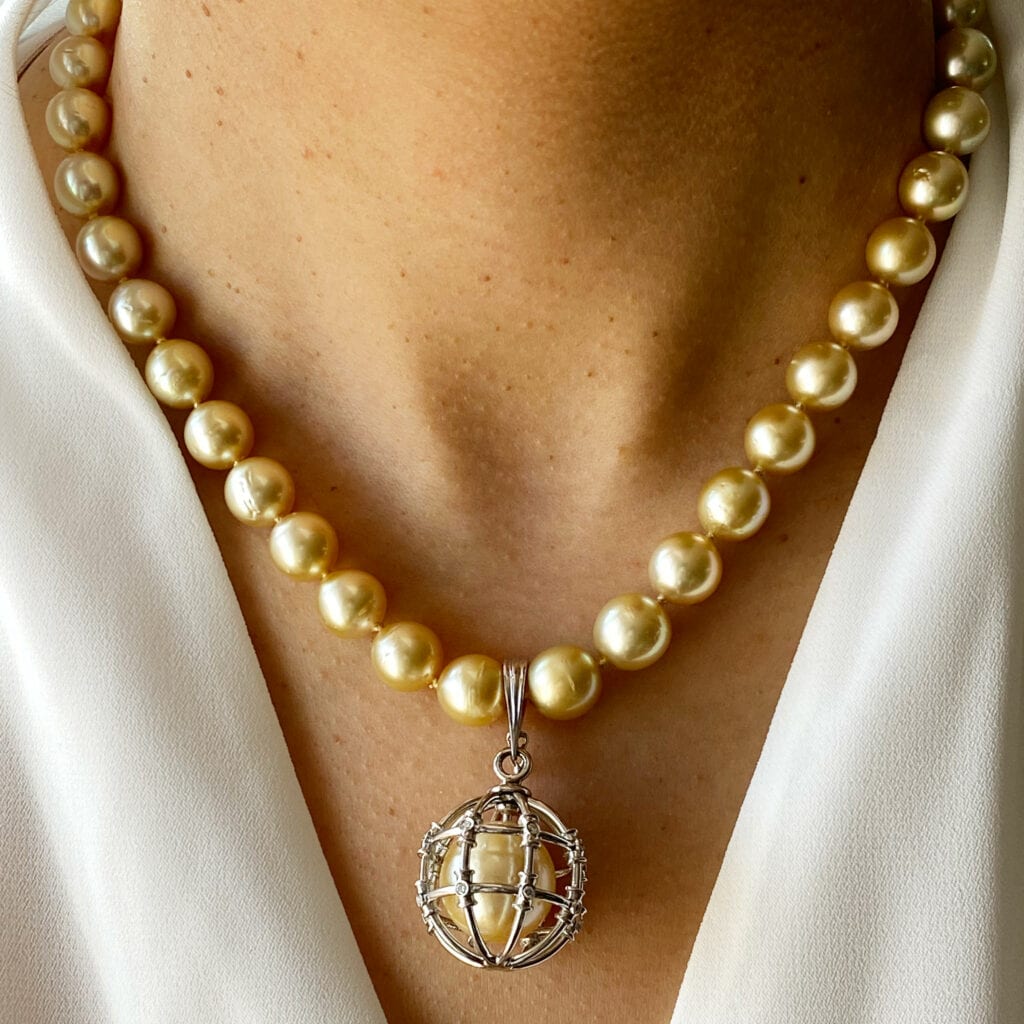
How Do Pearls Form?
Making pearls starts with the secretion of nacre, also known as “mother-of-pearl.” Nacre is a type of calcium carbonate that is secreted by the mollusk to protect itself from irritants. When an irritant, such as a bit of broken shell, becomes lodged in the animal’s shell, the mollusk secretes a layer of nacre around the irritant to protect itself.
Over time, this nacre – which is milky and iridescent and gives the pearl its luster – builds up, often becoming evenly smooth on all sides by water currents, and hardens into a sphere. In addition to spheres, pearls can be irregularly shaped, known as “baroque pearls.”
How Long Does It Take For a Pearl to Form?
Although pearls can start forming at six months, it takes about two years for a gem-quality pearl to form, and it can take up to four years before the pearls are ready to be harvested. The longer an oyster lives, the larger its pearl will grow.
Cultivated pearls can be left to develop until the desired pearl size is reached before harvesting. During this time, the mollusks are checked periodically for barnacles and parasites by pearl farmers and kept in fast-flowing, nutrient-rich waters, such as tidal bays.
How Are Pearls Harvested?
After the pearls have fully shaped and become large enough to be harvested, the next step is to remove them from the mollusk’s shell. For centuries, this meant simply prying open the mollusk’s shell and removing the pearl, but today pearls can be removed without injury to the host animal, although great care must be taken.
In many cases, that means removing the mollusks and transporting them to special harvesting facilities. Their shells are gently pried open by experts, and the pearls are extracted with specialized tools. This not only prevents injury to the mollusk but keeps it from potentially damaging the pearl within.
Many farmers will then return the mollusk to the water to grow more natural pearls. Still, others can artificially induce pearl formation by grafting a small particle – usually a tiny sphere of the shell and a bit of mantle tissue from another mollusk – into the harvested animal’s shell. Up to twenty-five of these grafts can be introduced to a single animal, producing twenty-five pearls per shell!
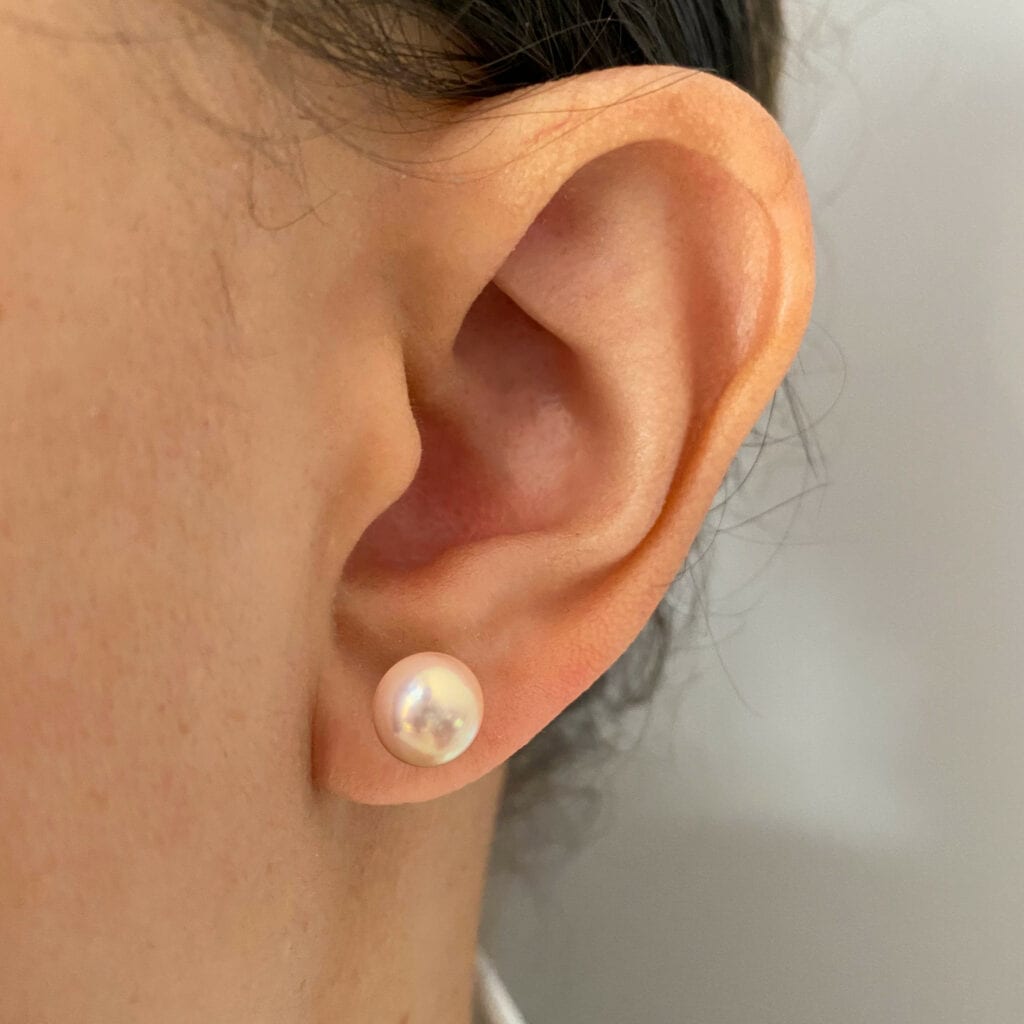
Mussels Pearls vs Oysters Pearls
Mussels and oysters are the two most common mollusks for natural and cultured pearls. Although these two distant relatives produce pearls in the same way, their methods of cultivation and even the respective qualities of their pearls can differ. However, it becomes possible to distinguish the two with a bit of practice.
Mussel Pearls
Mussel pearls, or “freshwater pearls,” are typically smaller and less lustrous than oyster pearls. Freshwater pearls can come in various colors; Akoya pearls from Japan can be white, black, pink, blue, gold, gray, and cream-colored.
As their nickname suggests, freshwater pearls are grown in freshwater lakes, rivers, and ponds and are the type most commonly associated with pearl farming. Since these farms can be situated in either warm or cold water, and because farmers can artificially induce the growth of more than one pearl within each oyster at a time, oyster pearls are vastly easier to produce en masse and saturate the pearl market.
Mussels can also produce “blister pearls,” unfinished pearls resembling blisters on the interior shell. Although not spherical, these can also be harvested and turned into exquisite jewelry.
Oyster Pearls
Oyster pearls, or “saltwater pearls,” are typically larger than mussel pearls, with a higher luster and smoothness. Like mussel pearls, saltwater pearls can come in various colors, from white, champagne, rose, and cream-colored varieties, to the famed Tahitian “black pearls” (which are actually varying shades of dark gray.)
Oysters, like mussels, can be cultivated on farms, though they are usually confined to warm, nutrient-rich waters such as the tidal bays of volcanic atolls. Additionally, unlike mussels, only one pearl can be grown in an oyster at a time. Because of this, saltwater pearls are rarer and can fetch much higher prices.

What Kind of Color Do Pearls Come In?
Although the nacre, which comprises pearls, is an iridescent, milky white color, various environmental factors can cause the pearl to change its hue as it develops. White, black, purple, champagne, green, blue, cream, and pink are just some of the colors that pearls can possess.
While some lower-quality pearls can be colored with fabric dyes to look more attractive, these dyes only penetrate the first few layers of nacre and are not as long-lasting and generally considered to lower the pearl’s market value.
What causes pearls to change color?
The most common cause of a pearl changing color is sunlight, which can turn white or cream pearls yellow over time. Pearls exposed to sunlight for long periods will eventually lose their luster completely, but this takes several years. Keeping pearls away from direct sunlight, such as in a jewelry box or closet, can prevent fading.
Other common mistakes that degrade a pearl’s luster include excessive handling, as skin oils can affect the surface of the pearl and even begin to dissolve the nacre. As with other gems, pearls are soft objects that can become scratched if handled or stored improperly – for instance, if they are placed in a box on top of other jewelry. Lastly, dehydration can degrade a pearl’s color through low-humidity environments such as safes or security boxes.
What Gives Pearls Their Luster?
The luster of a pearl is the most distinguishing characteristic and what sets them apart from other gemstones. As mentioned, a mollusk’s nacre gives pearls their luster; as with the interior of a mollusk’s shell, nacre is composed of calcium carbonate combined with a natural horn-like material called conchiolin, which is secreted around an object, or “nucleus,” in concentric layers.
Factors such as the constant sculpting by ocean currents give the pearl its roundness and smoothness. Still, the luster is created by the way light reflects off the surface of the nacre and can be influenced by a combination of factors, including the thickness of the nacre, the smoothness of the pearl’s surface, and how closely-packed the layers of the nacre are.
Maintaining Oysters Before the Harvest
While they are alive, oysters must be kept in an environment that allows them – and their pearls – to grow uninhibited. A saltwater environment, usually on the warmer side, is required. Additionally, protection from predators such as crabs and fish can be implemented in the form of nets.
Parasites, such as barnacles, are also a concern, so oyster farms must frequently monitor their water quality. These facilities maintain certain standards for salinity, temperature, and acidity, as well as water clarity, current, and the availability of nutrients (oysters require food to ensure their pearls grow smoothly and evenly.) As with any other cultivated animal, diseases can spread quickly through a population of oysters in close proximity, which is why such strict guidelines exist.
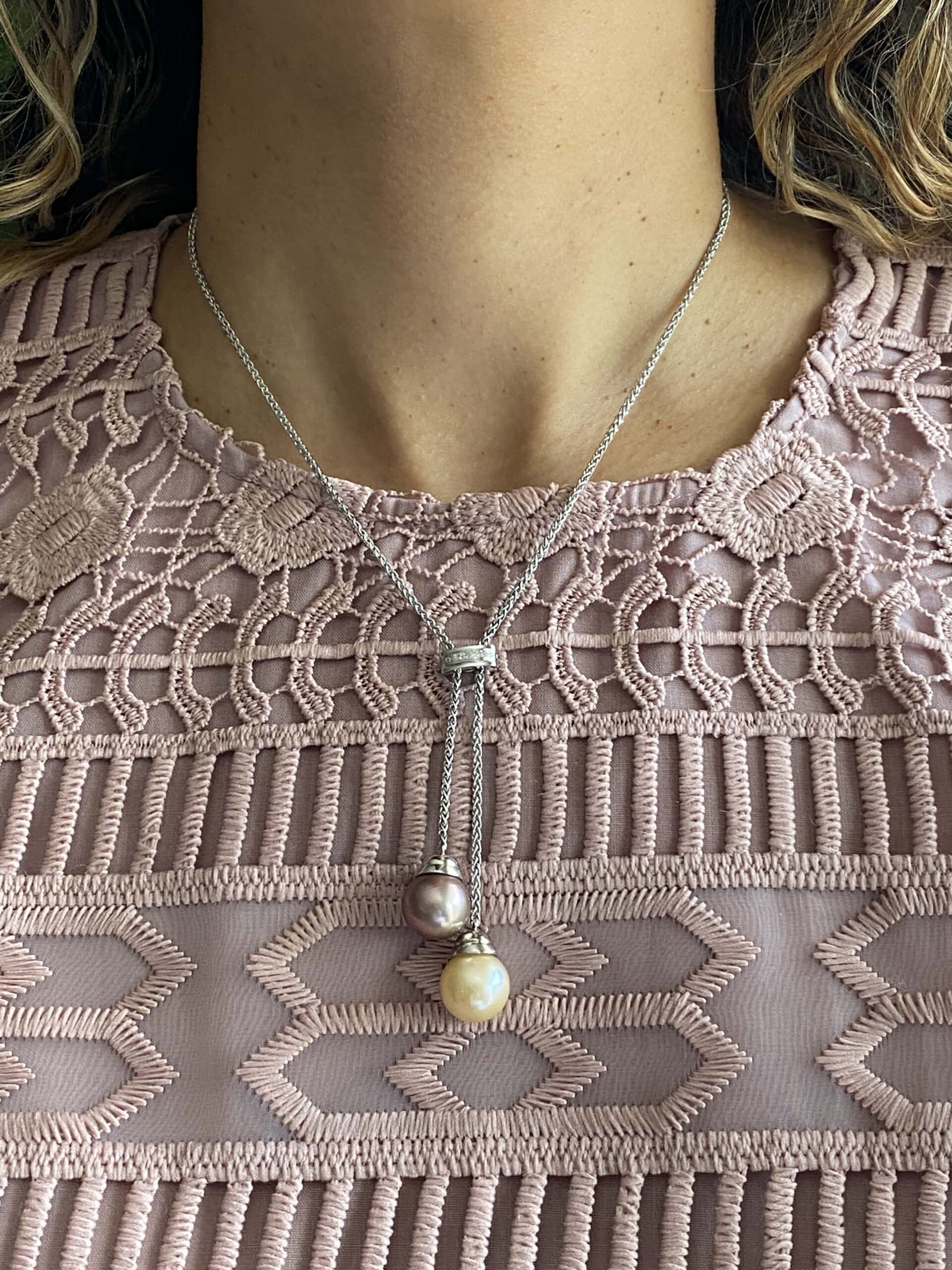
Maintaining Mussels Before the Harvest
Unlike oysters, mussels can tolerate a wider range of conditions and can be grown comfortably in either salt or freshwater. This makes them generally easier to grow and maintain; however, this also means that impurities or irregularities in the pearl become more likely.
An environment with strong water currents is ideal since mussel farms must be regularly flushed to remove any extraneous debris that might find its way into the animal and disrupt pearl formation. This is time-consuming, but it is necessary to ensure that only the best pearls are formed.
What Are Lab-Created Pearls?
“Lab-created” pearls are a term some use for imitation pearls. Imitation pearls are not true pearls; they are made from glass, plastic, or other natural materials with similar lusters, like conch shells. Unlike natural and cultivated pearls, organically grown within living mollusks, imitation pearls are simply polished into spheres and often treated with chemicals or dyes to improve their luster and sheen.
The quality of imitation pearls is usually lower than that of natural pearls because the process does not allow for as much variation; every pearl will be basically the same. However, this also means that they are more affordable, which has made them increasingly popular in recent years.
What Is The Difference Between Natural Pearls and Cultured Pearls?
All-natural pearls from the marine world had mollusk origins before the creation of cultured pearls. The previous section explained that pearl formation occurs when particles come into oysters. The most distinctive differentiation between natural versus cultured pearls is the manner in which they are created. Pearls are formed without human intervention. The insect irritant confined in mollusks is entirely random. A small incision in a cultured pearl will induce irritants to enter the mollusk by planting them in the soil. Most pearls that you will find in stores now are cultivated.
The Different Types of Cultured Oyster Pearl
The most commonly farmed types of oyster pearls are Akoya, South Sea, and Tahitian pearls.
Akoya pearls come from oysters that live in Japanese waters; they are typically small (ranging in size from about two to ten millimeters) and round with a high luster.
South Sea pearls come from oysters that live in the warm waters of the Pacific Ocean near Australia and Indonesia; they are larger than Akoya pearls (usually measuring between eight and eighteen millimeters) and have a more lustrous appearance.
Tahitian pearls come from black-lipped oysters found in French Polynesia; they are the largest and rarest type of pearl, averaging around fifteen millimeters, and are prized for their intense colors which can range from nearly black to shades of green, blue, and pink.
How Are Cultured Pearls Drilled?
Pearls commonly have minute holes drilled into them to allow them to be strung into jewelry, such as the iconic pearl necklace. The process begins by drilling a small hole through the pearl with a diamond drill bit, which creates an opening about one millimeter wide. The pearls are then strung on wire or nylon thread using either French-knotting or silk-knotting techniques. Because cultured pearls are much more common and generally less expensive to produce, export, and alter, the vast majority of drilled pearls come from cultivation.
How Can You Tell If an Oyster Has a Pearl Inside?
Strictly speaking, the only real way to tell if a mollusk contains a pearl is to open its shell and see for yourself. Only 1 in 10,000 oysters in the wild will have pearls inside, and only a small percentage of those will live long enough to grow gem-quality pearls. This is mainly due to the overharvesting of oyster beds in the 18th and 19th centuries and other more recent factors like pollution and climate change. The relative abundance of pearls on the market today is largely thanks to pearl farming and cultivation.
Do Mollusks feel pain when making pearls?
There is some debate over whether or not oysters feel pain when making pearls. Some people believe that the very nature of pearls forming as a defense against irritants and tissue damage means that the mollusks can “feel” the discomfort and subsequently secrete nacre to relieve their pain. However, there is little scientific evidence to support this claim. Oysters, mussels, and other mollusks do not possess a centralized nervous system the way we do, having only very basic nerve clusters to respond to stimuli. Therefore, it is widely believed that pearl formation is a reflexive reaction rather than an attempt at pain management.
Are Mollusks killed for their pearls?
Many prospective pearl buyers and collectors are concerned that pearl harvesting involves the death of the host animal. Simply put, it is not a good business model to kill a mollusk for its pearl or pearls since the animal is capable of producing many more over its lifetime. While it is true that mollusks sometimes die as a result of farmers implanting grafts to promote pearl formation, this is uncommon, and the vast majority of mollusks survive this procedure.
Quality Information: How Pearls are Graded?
Unlike other industries involving gems, such as diamonds, the pearl industry had not adopted a standardized grading system. However, most fine jewelers and collectors generally judge a pearl on six factors: size, shape, color, surface quality (e.g., blemishes or imperfections), and luster (the intensity of light reflected off the pearl’s surface).
These qualities are judged on a scale from A to AAAA, with A being poor quality, AA below average, AAA above average, and AAAA being flawless. The most prized pearls have no flaws and perfectly round shapes, but these are harder to cultivate or to find naturally in the wild, and as a result, more expensive.
AAAA: Flawless pearl on at least 95% of the pearl surface, with 5% concentrated imperfections.
AAA: Round shape; high luster; >90% clean surface; over 0.5 mm nacre; very good matching.
AA: Mostly round shape; good luster; >75% clean surface; 0.35 mm – 0.5 mm; good matching.
A: Near round shape; fair luster; <75% clean surface; 0.25 – 0.35 mm nacre; fair matching.
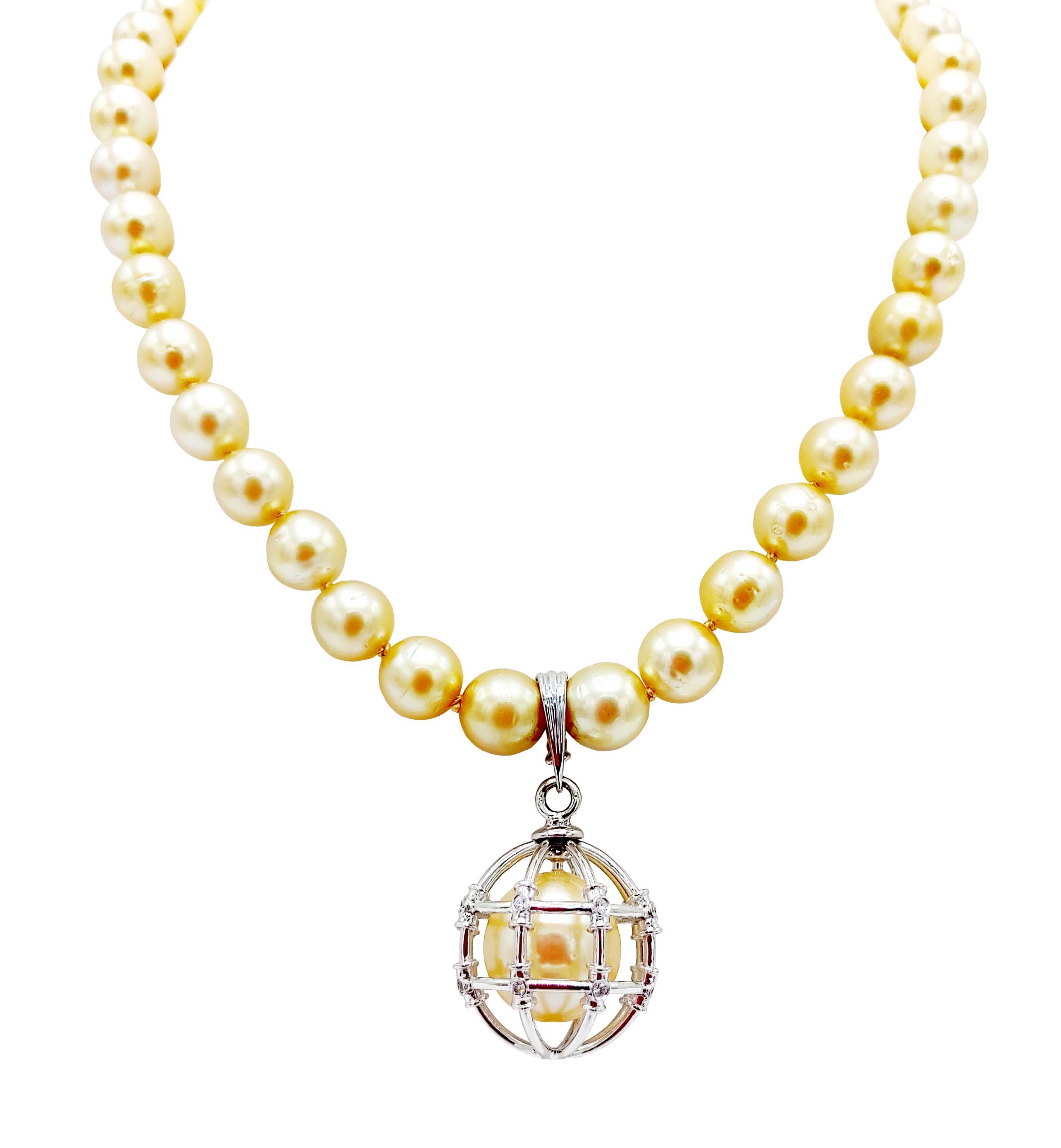
Pearl Jewelry Care and Maintenance
Regular cleaning, as well as proper handling and storage of pearls, mean they can easily last a lifetime and beyond. Here’s what you need to know when caring for your pearl jewelry:
How often should I clean my pearls?
You should clean your pearls at least once a week, preferably more often. This ensures that dirt and grime don’t build up on the surface of each bead which could potentially scratch them over time. It’s also important to clean your pearls after each wear – even if you don’t think they need it!
How do I clean my pearls?
The best way to clean pearl jewelry is with a soft cloth dampened in lukewarm water; never use harsh chemicals or abrasive scrubbers as these can damage them. For really stubborn dirt or grime, you can use a mild detergent (such as dish soap). Be sure to rinse them thoroughly afterward and allow them to dry completely before putting them away.
How should I store my pearls?
The best way to store pearl jewelry is in a soft cloth pouch or fabric-lined box; this will help prevent them from rubbing against each other and getting scratched. If you have multiple pieces, make sure each one is stored separately so they don’t tangle together.
What if my pearls break?
If your pearl jewelry breaks, it’s best to take it to a jeweler who specializes in repairing broken pearls; they’ll be able to re-string them and make sure they’re as good as new!
How often should I visit the jeweler for them?
Every year, it’s advised that you have your pearl jewelry inspected by a professional. This will allow them to remove any oil build-up and double-check the knots and ensure that everything is in good working order.
Maintenance and Care of Fine Jewelry
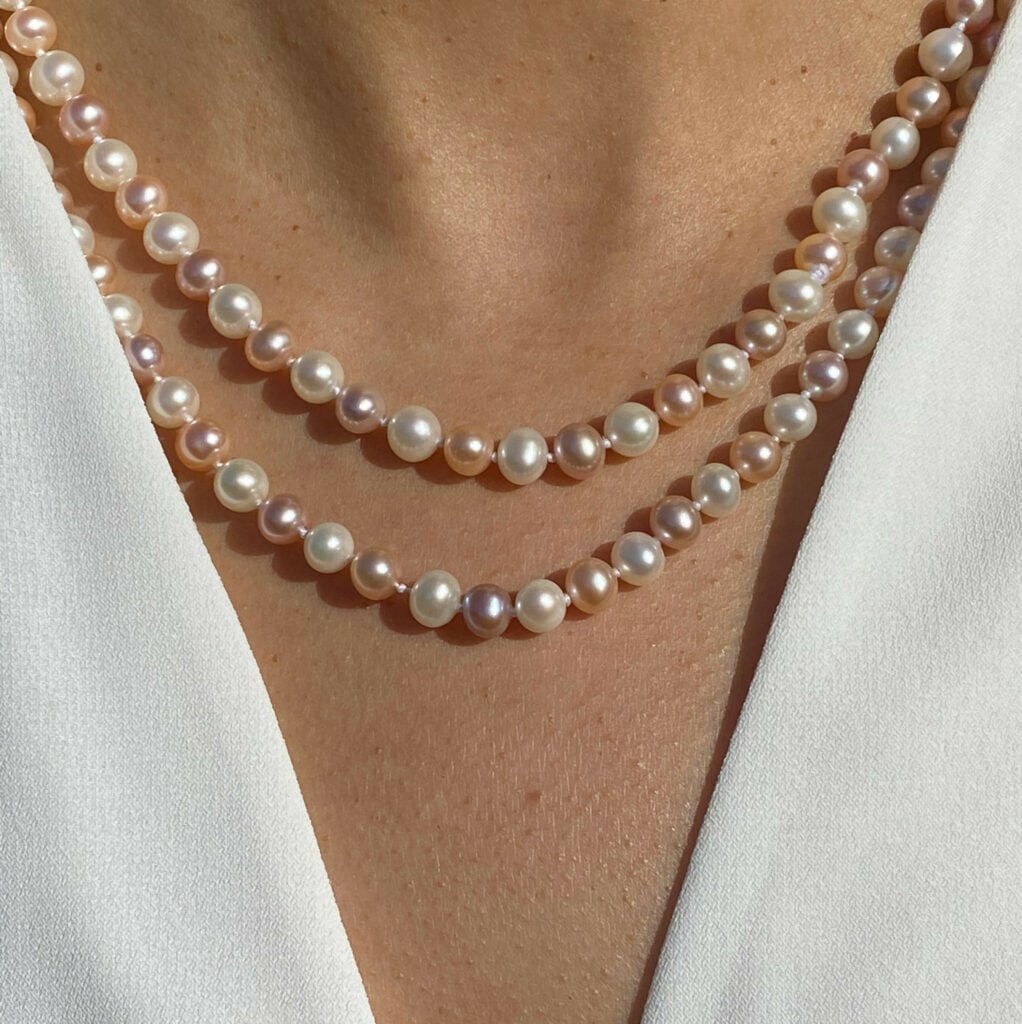
In Conclusion
Pearl collection has come a long way from its historical origins, from the famed “South Seas pearl divers” ‘of the past to modern industrial cultivation using ethical and eco-friendly techniques. This fascinating gem has maintained its allure throughout it all and is as popular as ever. A true hidden treasure, pearls radiate warmth, purity, and the beauty of the natural world.
